Amphipolis Greek Tomb: Skeleton of 'Hero' Discovered in Wooden Coffin Beneath Third Chamber
Greek archaeologists excavating a massive Alexander the Great-era burial mound complex at Kasta Hill, in the northern Greek region of Serres, have found the skeleton of a man in a limestone grave buried in the floor of the third chamber.
Within the grave is a wooden coffin that was once held together by iron and bronze nails, and studded in bone and glass decorations.
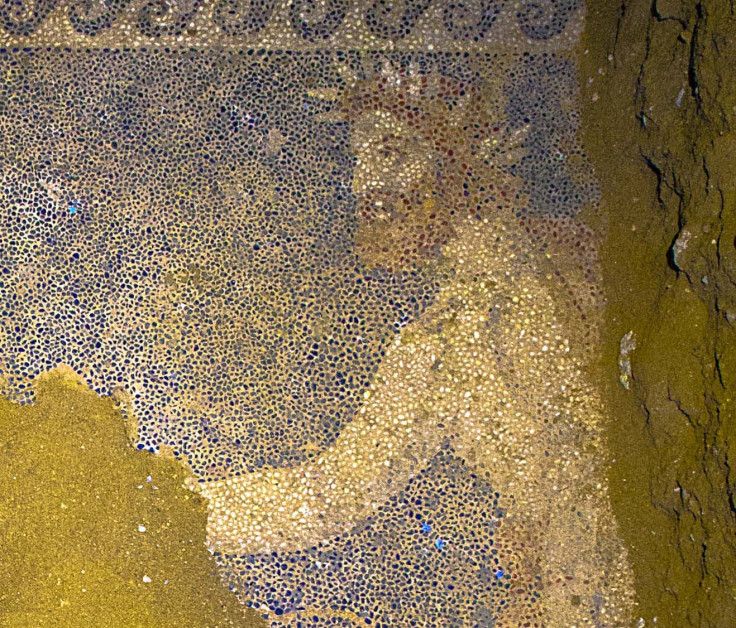
The archaeologists say that the coffin had disintegrated over time and the skeletal remains were found both inside and outside the grave in the floor, probably the result of looting of the site in ancient times.
The outside dimensions of the grave measure 3.23m long by 1.56m wide and 1m deep. By calculating the supports used to hold up the coffin, the archaeologists estimate that the person buried in the grave was at least 1.8m tall.
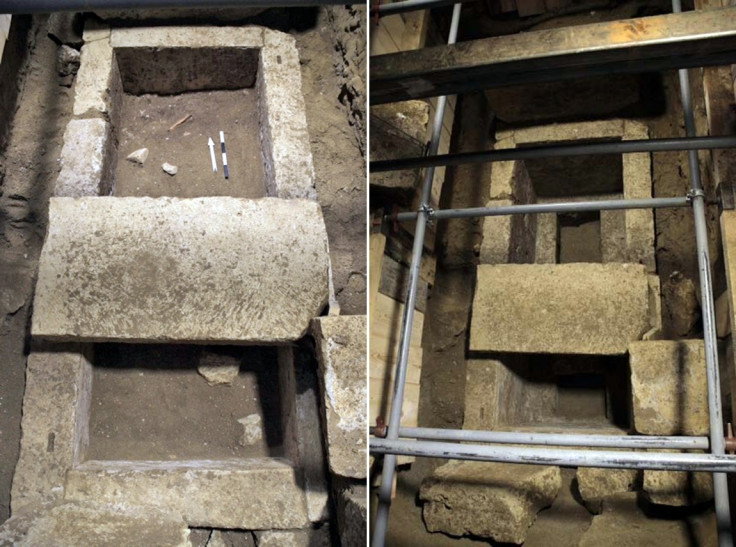
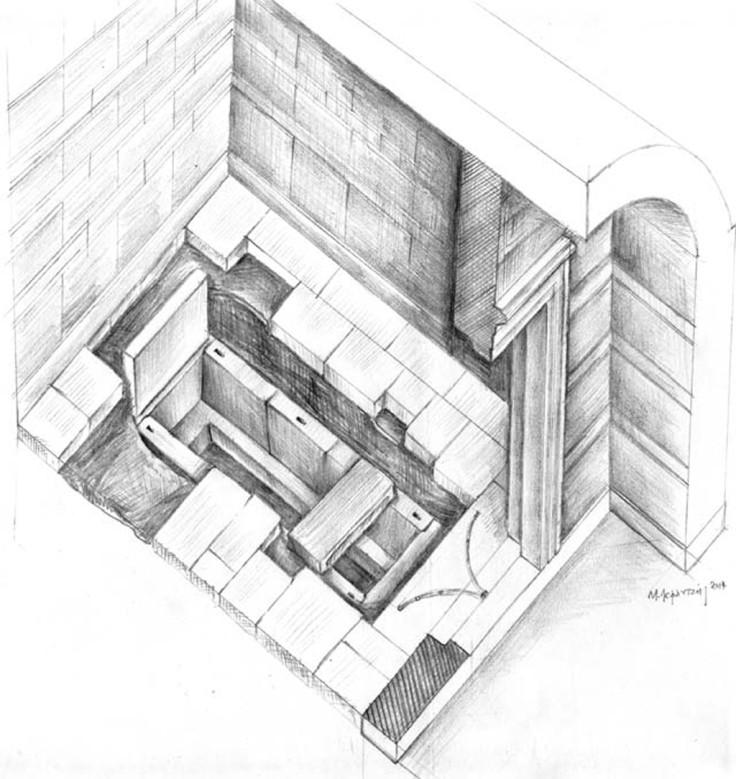
The Greek Ministry of Culture said in a statement: "It is probably the monument of a dead person who became a hero, meaning a mortal who was worshipped by society at that time. The deceased was a prominent person, since only this could explain the construction of this unique burial complex."
The skeletal remains will now be analysed by experts and the Greek government plans to share results of this analysis on 29 November.
The Kasta Hill Tomb
The Greek government formally announced to the world that the tomb had been discovered in Amphipolis in August, a Greek city that was founded by the Athenians in eastern Macedonia on the Strymon River in 438-437 BC.
Archaeologists took two years to excavate the burial mound on Kasta Hill to discover the entrance of the tomb, which is guarded by two sphinxes who lost their heads and wings in antiquity.

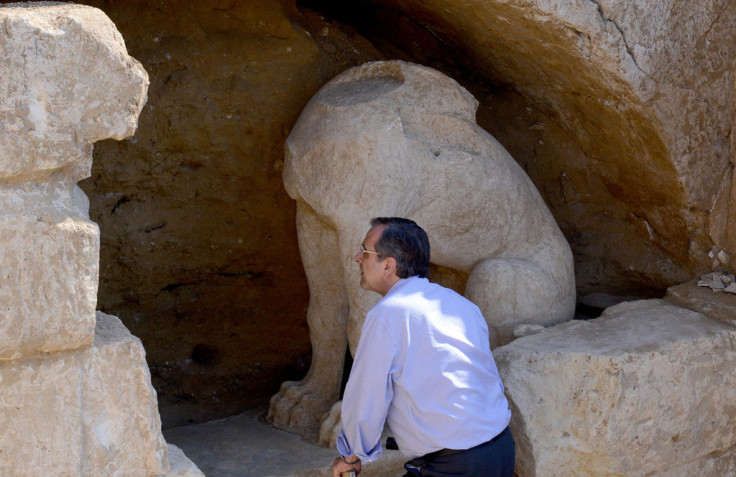
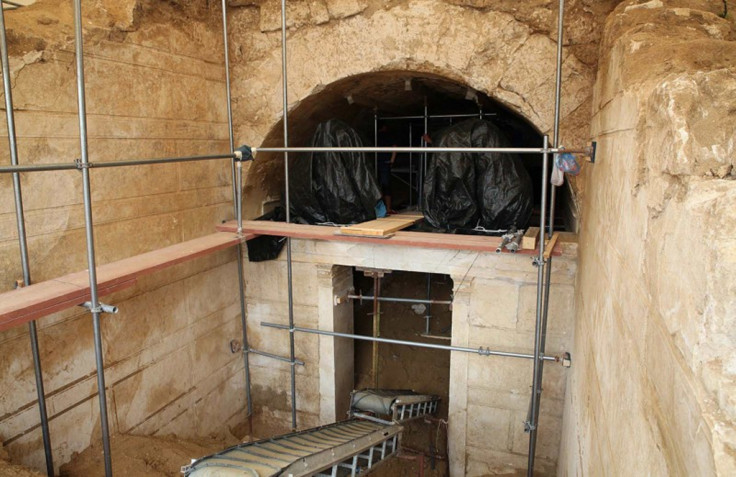
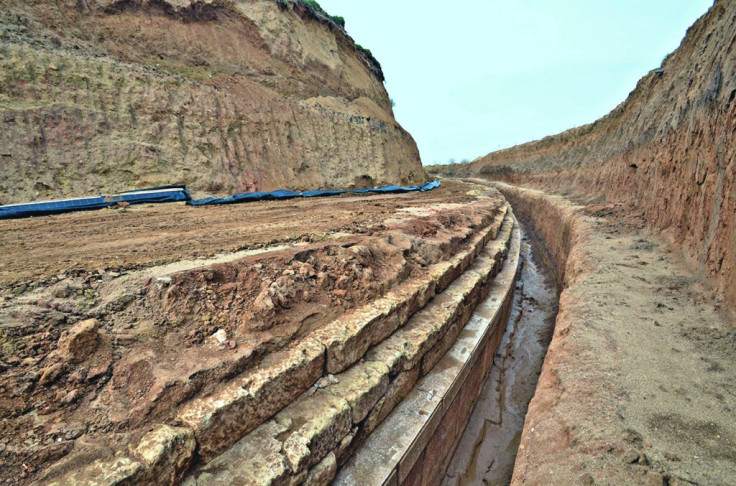
It is believed the tomb houses a very important figure from 320-300 BC, as the burial complex is ten times larger than the tomb of Alexander's father, Philip II of Macedon (read: Ancient Bones of Alexander the Great's Father King Philip II of Macedon Discovered in Northern Greece).
Greek media have repeatedly hypothesised that the tomb could belong to Alexander the Great but that is unlikely as the tomb was built after his death and his tomb is believed to be somewhere in Egypt.
Other guesses included Alexander the Great's mother Olympias, or his wife Roxana. But given that the body is likely to be male, current bets are on the general Laomedon, who was a friend of Alexander's.
Largest amount of marble ever found

The archaeologists say that the amount of marble used to build this tomb is the biggest ever seen in Macedonia, and they have so far found at least 500 marble pieces in the area surrounding Kasta Hill, including at least 100 different types of architecture, including features like pillars and cornices.
The famous Lion of Amphipolis, one of the best preserved monuments from 4th century BC, was found in 1912 by the Greek army in the river bed of the Strymónas.
Acclaimed architect Michael Lefantzis believes it once stood at the highest and most central point of the Kasta Hill mound. It now stands next to the old bridge over Strymónas River, on the street Amphipolis-Serraiki Akti.
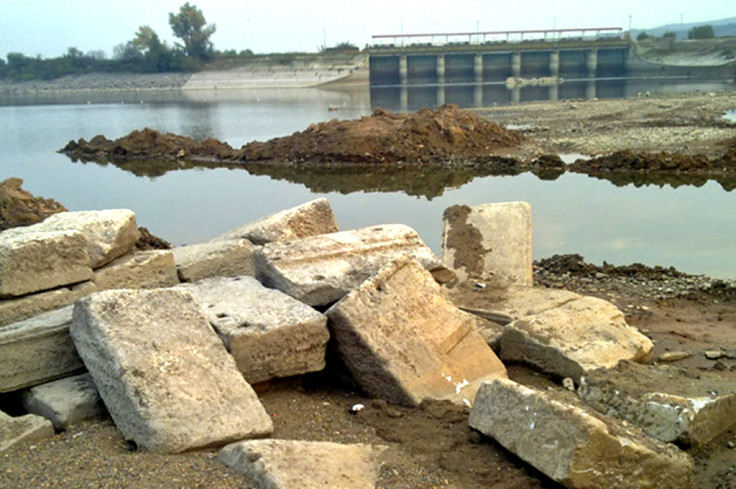
Lake Kerkini is the site of an artificial reservoir created in 1932 from an area of extremely extensive marshland.
Its primary inflows and outflows come from the Strymónas River, and the archaeologists revealed that in the lake, they discovered within the sediment, alternating layers of sand and marble.
When compared to samples of the marble on the inside and outside of the tomb, the archaeologists say that the marble discovered in the lake is a match.
The tomb discoveries so far
In the last three months, news of discoveries from the tomb have been coming at great frequency, sometimes once a week.
Two headless sphinxes guard the entrance to the tomb (one of their heads was found two weeks ago), and behind the sealing wall, there is an antechamber and three other chambers in the tomb.
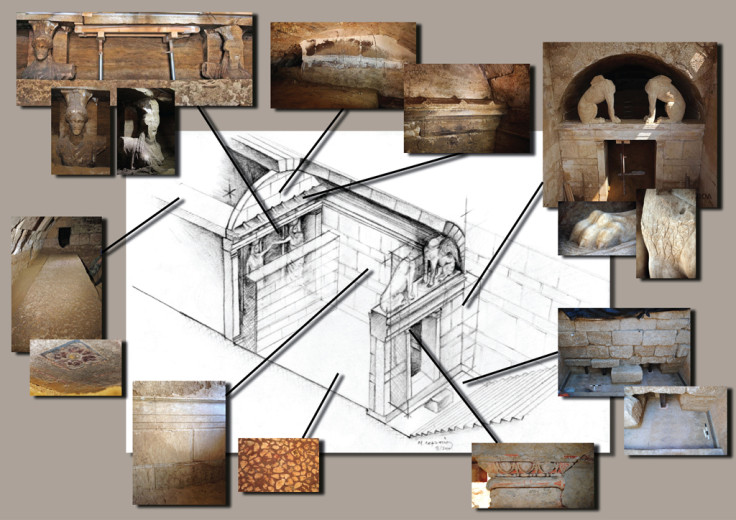
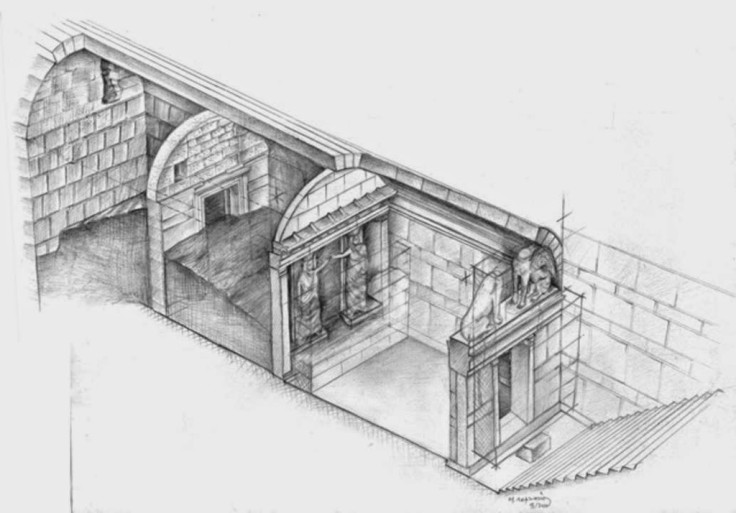
It appears the tomb was sealed by pouring sandy soil into the tomb through gaps at the top of the diaphragmatic walls of the chambers.
The archaeologists spent three weeks in September uncovering two large, exquisitely carved caryatid statues guarding the entrance to the second chamber (see more photos), from the sandy soil, and they have had to do the same in the second chamber behind the statues.
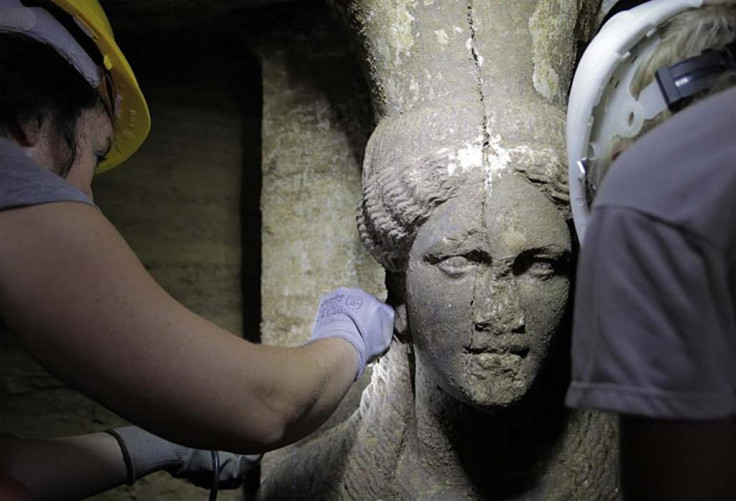

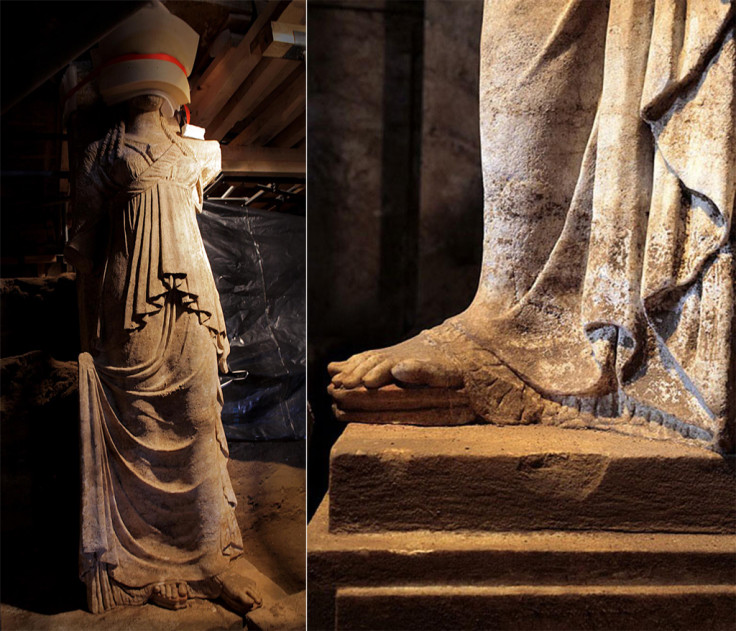
The statues stand over 7.5ft tall and amazingly their bodies and delicately carved feet are still intact, with them wearing kothornoi, ancient Greek ladies' shoes that resemble platform sandals.
The multitude of layers and folds that make up the caryatids' clothing feature very intricate details with a visible under-layer and traces of red and yellow paint still remaining on their feet.
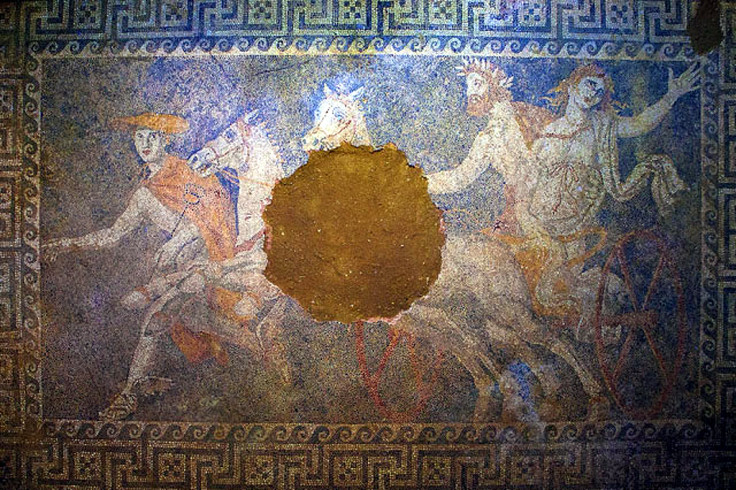
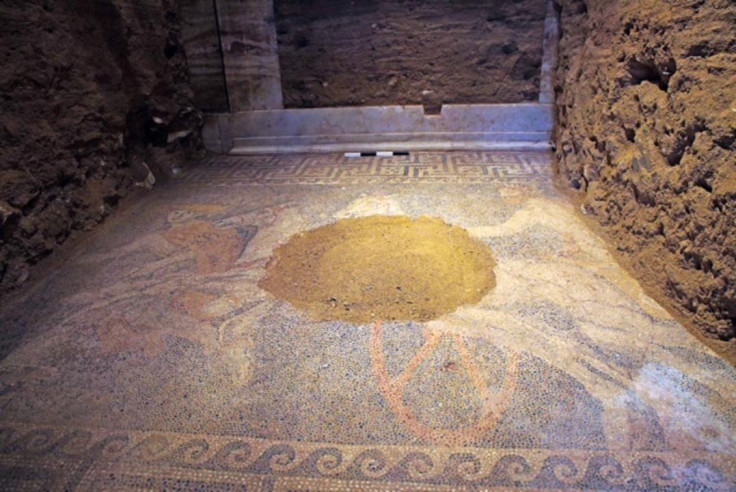
In October, the archaeologists discovered a stunning mosaic floor in the third chamber that tells the mythical tale of Zeus' daughter Persephone being abducted by Pluto, the god of the underworld (who used to be known as Hades).
It was customary in these traditional representations of the tale for Hermes, who among other things was a guide to the underworld to be present in the depictions.
According to the Greek Ministry of Culture, this mosaic bears a striking resemblance to the "Rape of Persephone" wall mural in Tomb I, the supposed Macedonian Tomb of Persephone at the royal cemetery in Vergina (Aigai). This is the first time that a mosaic made from pebbles has been found in a funerary monument.
Since Greek Prime Minister Antonis Samaras paid an official visit to the site in August, Greek media has accused him of using the discovery as a distraction to the political troubles facing the rather shaky new coalition government, likening Amphipolis to an "archaeological Disneyland" attracting streams of tourists.
© Copyright IBTimes 2025. All rights reserved.




















